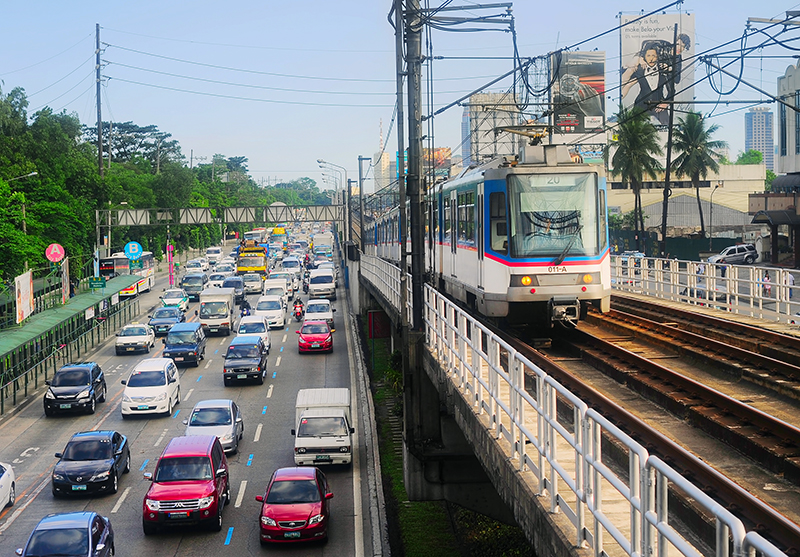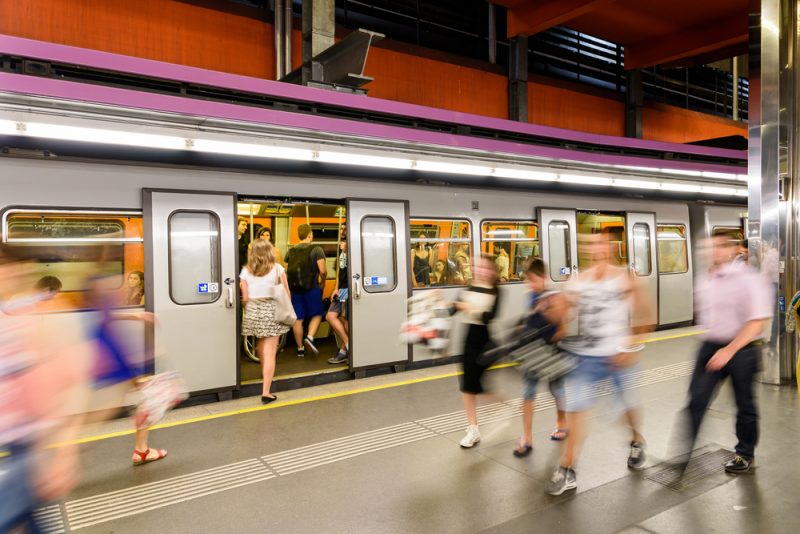
By Tom Matte, Vice President, Environmental Health, Vital Strategies
While cities often burnish their healthy and green images by touting bike lanes, bike shares and electric vehicle charging stations, the truth is that a much more prosaic technology provides larger benefits to people and the planet: public transportation. With the world’s population rapidly urbanizing, investment and street space devoted to transit are too often squeezed in both low income and wealthy countries. It is a good time to consider how a well-functioning transit system enables the upsides of urbanization while mitigating some of the downsides.
Regular physical activity promotes health in many ways, substantially reducing the risk of a wide range of chronic health conditions, including obesity, diabetes, cardiovascular disease, hypertension, cancer, osteoporosis, depression and dementia. While many think of regular physical activity as workouts at the gym or other recreational exercise, those who walk or cycle as part of their commute or for errands are much more likely to get healthy amounts of activity than those who drive. For some commuters, walking or cycling from home to work is practical and routine. But in many cities with public transit systems, many more commuters have a daily walk (or perhaps bike ride) to get to and from a transit stop at either end of their journey.
One example of this can be seen in New York City, where there are roughly 5.5 million daily subway trips and more than 2 million bus trips compared to an estimated 450,000 daily cycling trips. A study from the New York City Department of Health and Mental Hygiene (NYCDOHMH) showed those commuting by transit rides are much more physically active than those commuting by car or taxi and nearly as active as those commuting primarily by walking or biking. While the rate of cycling is rapidly increasing, it will be far below public transit ridership for many years to come. And many are using our bike share system as one link in a daily commute that includes mass transit.
More direct evidence of the health benefits of public transit came from a UK study that tracked nearly 6,000 participants and identified those who had changed their main commute mode from driving to either public or active transportation (cycling or walking) and vice versa. More than 90% of the non-drive commuters were using public transit. A switch away from driving was associated with losing weight, while those who switched to a driving commute gained weight.
For low-income urban residents seeking upward economic mobility, their opportunities can depend on the number of jobs within a commute that is affordable, safe and practical in terms of commute time. In urban neighborhoods without transit, jobs and services may be too far or the route may be too dangerous for walking or cycling. Emerging research in the US is showing less economic mobility in more sprawling, car dependent cities. Even if residents of neighborhoods lacking transit are able to purchase a car, the combined costs of housing and car ownership can be unaffordable. There is no reason to think that the growing numbers of urban poor in cities around the world will not be similarly disadvantaged if they have poor access to public transit.

Public transit also supports urban living that uses less land and energy per person. By reducing the need for car ownership and driving, public transportation makes it possible to use space that would otherwise be needed for parking and roads. Furthermore, public transit can support a higher density of residential and commercial development, meaning more people can live, shop and work in less space. The space efficiency of public transit helps reduce the loss of natural environments and farms to urbanization. This is no small advantage, as urbanized land area globally is growing at double the rate of population growth. An indirect health benefit of the reduction in urban sprawl that public transit makes possible is reduced risk of traffic crashes, possibly due in part to lower vehicle speeds in compact cities. This could have substantial benefits to public health, as 1.2 million people worldwide are killed in road traffic crashes annually.
By sharing rides in buses and subways, people can use much less energy in their daily commutes compared to driving. For example, by reducing the number and distance of car trips needed in the New York City metro area, the public transit system avoids greenhouse gas emissions equivalent to three times the total emissions of San Francisco. With an additional 2.5 billion people expected to live in urban areas by 2050 and most of that growth in countries of Asia and Africa with rapidly growing energy demand and vehicle fleets, the potential for compact, transit oriented cities to reduce global greenhouse gas emissions is large.
Though often a hallmark of wealthy cities, effective public transit is essential not only in high-income countries, but in low- and middle-income countries (LMICs) as well. Dedicated bus lanes or true bus rapid transit (BRT) systems are a proven and very cost effective way to rapidly expand public transit in LMICs. For example: in 1998, the city of Bogota, Colombia approved a bus rapid transit system known as the TransMilenio. Developers initially aimed to construct 388 kilometers of BRT in 22 corridors of the city between 1998 and 2006. The system has been extremely successful, with daily ridership totaling more than 1.5 million, accounting for 74% of total public transit trips in the city.
While many cities and national governments are investing in public transit in a big way, too many cities have systems that are underfunded, inadequate and over capacity. New York City’s busy subway system, for example, is currently plagued by breakdowns due to an aging signal system, years of deferred capital investments and inadequate or short-term repairs. This has led to a 21% decrease in on-time performance in the past 5 years, forcing riders to miss medical, childcare and other important appointments. Furthermore, a recent survey of 1,200 subway riders released by the City Comptroller found that 74% of respondents had been late to work due to transit delays in the past three months. This highlights the critical role public transit plays in our lives.
Unfortunately, bus transit systems are too often hampered by traffic jammed roadways or demands to close bus lanes that are blamed for worsening congestion by the rapidly growing number of car owners who often have outsized influence on transportation policy. For example, private car ownership in Bogota increased from 104 vehicles per 1,000 people in 2003 to 163 in 2008 with almost no increase in roadways. The effect has been worsening service, even though the system was well-planned and funded. In Delhi, India, bus rapid transit corridors ran into fierce opposition from car commuters, leading the city government to scrap it, despite the desperate need for relief from a car-centered transportation system choking on traffic congestion. In Jakarta, a bus rapid transit system that has functioned fairly well within the city bogs down in traffic at the city limits where the separate bus lanes end. This can mean multi-hour trips in bumper-to-bumper traffic for commuters from satellite cities.
If cities are ever going to reach their full potential as healthy places to live and engines of opportunity, while easing the pressure of human activity on the planet, public transit needs to be elevated on the global health, environment and development agendas.
CityHealth Perspective is a blog series that examines the importance of urban policies and environments on public health. Urban interventions are a strategic focus for our work and a core strength of our team. With the majority of the world’s population now urban and an additional 2.5 billion urban dwellers anticipated by 2050, we believe that public health must play a stronger role in shaping future cities that advance human and planetary health.